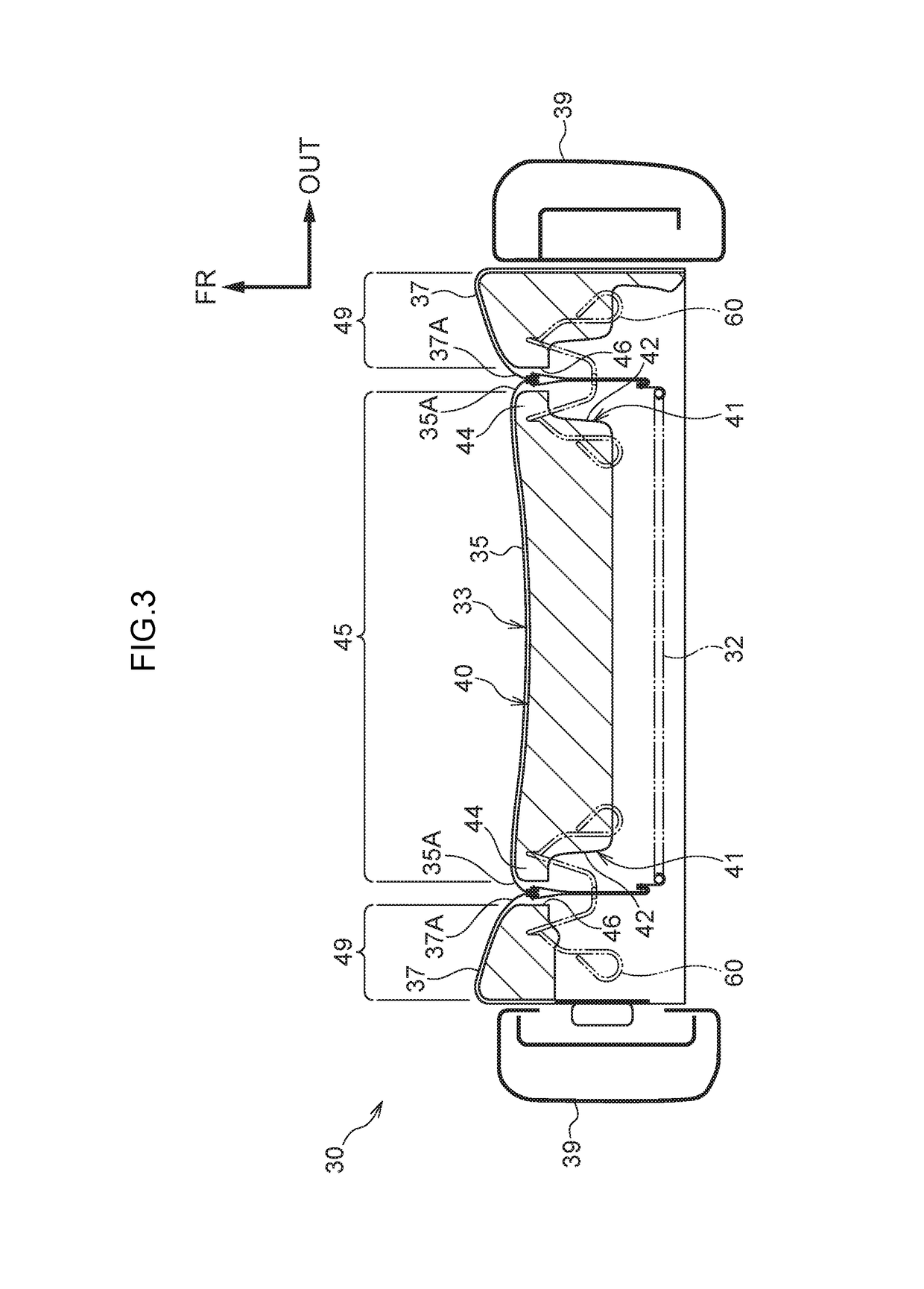Vehicle seat
a seat and seat technology, applied in the field of seat seats, can solve the problem of inferior external appearance of the seatback, and achieve the effect of simplifying the shape facilitating the processing of the seatback pad
- Summary
- Abstract
- Description
- Claims
- Application Information
AI Technical Summary
Benefits of technology
Problems solved by technology
Method used
Image
Examples
first modified example
[0099](First Modified Example of Pull-In Structure)
[0100]Explanation follows regarding a first modified example of a pull-in structure at the lower end portions of the edge 35A and the edge 37A. Note that explanation of portions that are the same as in the exemplary embodiment described above is omitted as appropriate.
[0101]As illustrated in FIG. 14, in the first modified example, the lower end portions of the edge 35A and the edge 37A (portions disposed in the slit 46) are stitched to respective front end portions (examples of other end portions) of a pull-in cloth 182 (an example of a first pull-in member) and a pull-in cloth 183 (an example of a second pull-in member). The lower end portions of the edge 35A and the edge 37A are not stitched together and so are capable of separating from each other.
[0102]A front end portion of the pull-in cloth 182 is disposed at a seat width direction inside with respect to a front end portion of the pull-in cloth 183, and a rear end portion (an ...
second modified example
[0107](Second Modified Example of Pull-In Structure)
[0108]Explanation follows regarding a second modified example of a pull-in structure at the lower end portions of the edge 35A and the edge 37A. Note that explanation of portions that are the same as in the exemplary embodiment described above is omitted as appropriate.
[0109]As illustrated in FIG. 17 and FIG. 18 (an enlarged view of FIG. 17), in the second modified example, resin plates 235, 237 (examples of reinforcement members) are disposed at the lower end portions of the edge 35A and the edge 37A (portions disposed in the slit 46).
[0110]In a state in which the resin plates 235, 237 are tucked inside the respective edges 35A, 37A, the resin plates 235, 237 are then sewn together with the front end portions (an example of other end portions) of the pull-in cloth 282 (an example of a first pull-in member) and the pull-in cloth 283 (an example of a second pull-in member), respectively. The lower end portions of the edge 35A and th...
PUM
 Login to View More
Login to View More Abstract
Description
Claims
Application Information
 Login to View More
Login to View More - R&D
- Intellectual Property
- Life Sciences
- Materials
- Tech Scout
- Unparalleled Data Quality
- Higher Quality Content
- 60% Fewer Hallucinations
Browse by: Latest US Patents, China's latest patents, Technical Efficacy Thesaurus, Application Domain, Technology Topic, Popular Technical Reports.
© 2025 PatSnap. All rights reserved.Legal|Privacy policy|Modern Slavery Act Transparency Statement|Sitemap|About US| Contact US: help@patsnap.com



